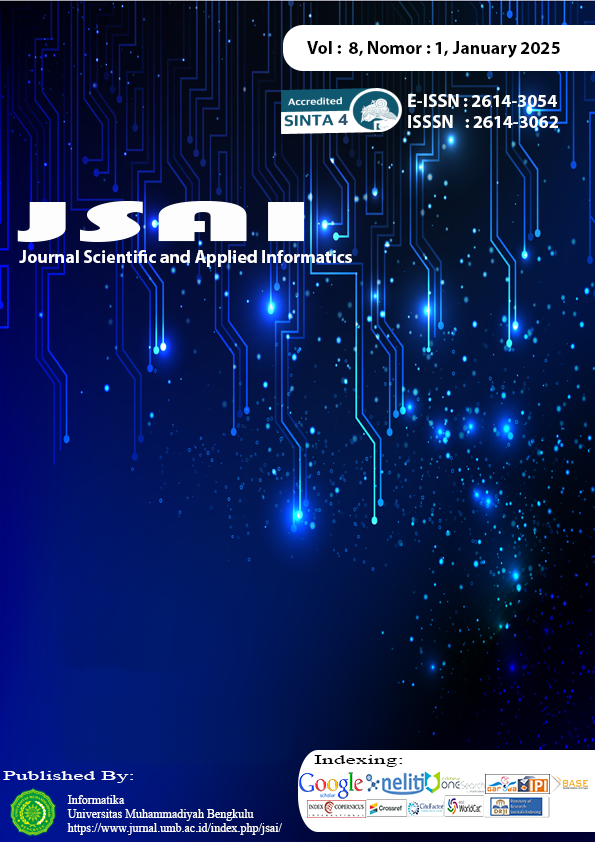Time Series Analysis for Forecasting Livestock Population in Indonesia with LSTM Model
DOI:
https://doi.org/10.36085/jsai.v8i1.7566Abstract
Livestock population in Indonesia is one of the key indicators supporting national food security, particularly in meeting the demand for animal-based protein. However, the suboptimal utilization of livestock population data for strategic planning remains a challenge in the livestock sector. This study aims to predict livestock population in Indonesia using the Long Short-Term Memory (LSTM) method, a variant of Recurrent Neural Network (RNN) designed for time series data analysis. The livestock population data used in this research was obtained from the Central Statistics Agency (BPS) for the period of 2006 to 2022. The LSTM model was trained using 80% of the data for training and 20% for testing, with evaluation conducted using Mean Absolute Error (MAE) and Root Mean Squared Error (RMSE). The results indicate that the LSTM model can forecast the national livestock population up to 2033 with good accuracy, particularly for livestock such as goats (MAPE 5.47%) and beef cattle (MAPE 5.64%). However, a higher error rate was observed for buffalo (MAPE 16.57%). The predictions indicate a significant growth trend in poultry populations, such as broiler chickens and laying hens. In conclusion, this model can support data-driven decision-making to ensure stable and sustainable animal protein availability, thereby strengthening national food security.
Downloads
Published
Issue
Section
License
Copyright (c) 2025 Tito Prabowo, Lestariningsih, Abd. Charis Fauzab, Veradella Yuelisa Mafula

This work is licensed under a Creative Commons Attribution-NonCommercial-NoDerivatives 4.0 International License.







